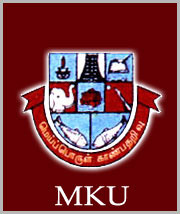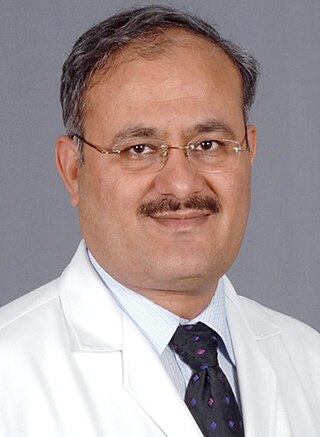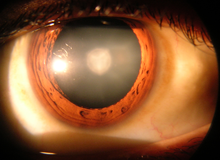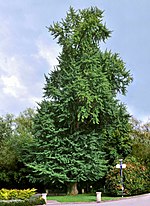
Madurai Kamaraj University (MKU) is a public state university located in the Madurai city, in southern Tamil Nadu, India, that was established in 1966. MKU is one of the 15 universities in India with the University with Potential for Excellence status, which was awarded by the University Grants Commission (UGC) in India. In 2021, the university was awarded an 'A++' grade from the National Assessment and Accreditation Council (NAAC) in its 4th cycle.
Perumalsamy Namperumalsamy is an Indian ophthalmologist who specializes in diabetic retinopathy. He is also a retina-vitreous expert. Namperumalsamy is currently the chairman Emeritus of Aravind Eye Hospital, Madurai. He is known for bringing assembly-line efficiency to eye surgery. In 2010, TIME magazine named Namperumalsamy one of the 100 most influential people in the world.

Prof. Narinder Kumar Gupta, known as Prof. N. K. Gupta or Prof Narinder Gupta is a research scientist, educator, and engineer. Born 22 August 1942 in Mirpur, Jammu and Kashmir, India, is Professor of Mechanics at the Indian Institute of Technology in Delhi. Gupta works in the area of large deformations of metals and composites at low, medium and high rates of loading. His research stimulates the development of constitutive behaviour of materials, understanding of the basic mechanics of large deformation, design for crashworthiness of road and air vehicles, design for safety in defence applications and in design of metal forming processes.
Palle Rama Rao FREng is an Indian scientist noted for his contribution to the field of Physical and Mechanical Metallurgy. He has collaborated and conducted research activities for over dozen universities and associations all over India and abroad. He has been honoured with the titles of Padma Vibhushan in 2011 by president of India for his contributions to scientific community. He is acting as the chairman, Governing Council, International Advanced Research Centre for Powder Metallurgy & New Materials (ARCI), Hyderabad.

Mohan Rao Chintalagiri is an Indian molecular biologist renowned for his contributions to the fields of biophysics and molecular biology. He has earned international recognition for his work on molecular chaperones as well as his contribution to the field of photoacoustic spectroscopy in health and disease. He is a former Director of the Centre for Cellular and Molecular Biology (CCMB) and served as a CSIR-Distinguished Scientist. He received the Shanti Swarup Bhatnagar Prize in 1999, the highest science honor in India.
Dipankar Das Sarma, popularly known as D.D. Sarma, is an Indian scientist and structural chemist, known for his researches in the fields of Solid State Chemistry, Spectroscopy, Condensed Matter Physics, Materials Science, and Nanoscience. He is a former MLS Chair Professor of Physics and Chairman of the Centre for Advanced Materials and the GAST Professor of Uppsala University, Sweden, A recipient of TWAS Physics Prize and the UNESCO Biennial Javed Husain Prize, Sarma was honored by the Council for Scientific and Industrial Research (CSIR), Government of India, in 1994, with the Shanti Swarup Bhatnagar Prize for Science and Technology.

Narayanaswamy Balakrishnan is an Indian aerospace and computer scientist. He is a Professor of the Department of Aerospace Engineering and Supercomputer Education Research Centre of Indian Institute of Science and a visiting professor of Jawaharlal Nehru Centre for Advanced Scientific Research. Balakrishnan was honored by the Government of India, in 2002, with the fourth highest Indian civilian award of Padma Shri
Gopalasamudram Sitaraman Venkataraman (1930–1998) was an Indian botanist, academic and the director of the Indian Agricultural Research Institute (IARI), New Delhi. He was also a director of the DBT Centre for Blue-Green Algae at Madurai Kamaraj University and a recipient of the VASVIK Industrial Research Award and Om Prakash Bhasin Award. The Government of India awarded him the fourth highest civilian honour of the Padma Shri in 1992.
Sudhir Kumar Sopory is an Indian educationist, plant physiologist, scientist and former vice chancellor of Jawaharlal Nehru University, New Delhi. He is known to be the first to purify a protein kinase C activity from plants and is credited with the identification of topoisomerase as a substrate of protein kinase C. He is an elected Fellow of several major Indian science academies and The World Academy of Sciences (TWAS) and is a recipient of many honours, including the 1987 Shanti Swarup Bhatangar Prize, the highest Indian award in the science and technology categories. The Government of India awarded him the fourth highest civilian honour of the Padma Shri, in 2007, for his contributions to science and technology.

Ranbir Chander Sobti is an Indian educationist, cell biologist. He is a former vice chancellor of the Panjab University, Chandigarh and Babasaheb Bhimrao Ambedkar University, Lucknow. He is known to have involved in advanced research in plant genetic studies and has written over 240 articles, and 22 books including Essentials of Biotechnology and Emerging Trends in Biomedical Science and Health. He is an elected Fellow of several major science academies such as Indian National Science Academy, National Academy of Agricultural Sciences, National Academy of Medical Sciences, National Academy of Sciences, India, and Punjab Academy of Sciences. The Government of India awarded him the fourth highest civilian honour of the Padma Shri, in 2009, for his contributions to Literature and Education.

Dipankar Chatterji is an Indian molecular biologist and the Honorary Professor at Molecular Biophysics Unit, Indian Institute of Science, a multidisciplinary research institute under the Department of Science and Technology of the Government of India. He is known for his pioneering research on bacterial transcription. He is a recipient of Shanti Swarup Bhatnagar Prize and is an elected fellow of all the major Indian science academies. The Government of India awarded him the fourth highest civilian honour of the Padma Shri, in 2016, for his contributions to science and engineering.
Kuppamuthu Dharmalingam is an Indian proteomicist, geneticist, academic and the founder of Centre of Excellence in Bioinformatics at Madurai Kamaraj University. He is known for his contributions in the fields of eye disease proteomics and mutagenic DNA repair in Escherichia coli. He is an elected fellow of the Indian Academy of Sciences and the National Academy of Sciences, India. The Council of Scientific and Industrial Research, the apex agency of the Government of India for scientific research, awarded him the Shanti Swarup Bhatnagar Prize for Science and Technology, one of the highest Indian science awards, in 1992, for his contributions to biological sciences.
Tapas Kumar Kundu is an Indian molecular biologist, academician and at present the Director of Central Drug Research Institute, a prestigious research institute of Council of Scientific and Industrial Research at Lucknow. He is the head of the Transcription and Disease Laboratory of Jawaharlal Nehru Centre for Advanced Scientific Research. He is known for his studies on the regulation of Gene expression and his contributions in cancer diagnostics and the development of new drug candidates for cancer and AIDS therapeutics. He is an elected fellow of the Indian Academy of Sciences, Indian National Science Academy and the National Academy of Sciences, India and a J. C. Bose National Fellow of the Department of Science and Technology. The Council of Scientific and Industrial Research, the apex agency of the Government of India for scientific research, awarded him the Shanti Swarup Bhatnagar Prize for Science and Technology, one of the highest Indian science awards, in 2005, for his contributions to biological sciences. He is also a recipient of the National Bioscience Award for Career Development of the Department of Biotechnology.

Virender Singh Sangwan is an Indian ophthalmologist and the Dr. Paul Dubord Chair professor and director of the L. V. Prasad Eye Institute, Hyderabad. Known for his research on limbal stem cells, Sangwan is the founder secretary and an adviser of the Uveitis Society of India. The Council of Scientific and Industrial Research, the apex agency of the Government of India for scientific research, awarded him the Shanti Swarup Bhatnagar Prize for Science and Technology, one of the highest Indian science awards for his contributions to Medical Sciences in 2006.
Akhilesh Kumar Tyagi is an Indian plant biologist and the former director of National Institute of Plant Genome Research. Known for his studies on plant genomics and biotechnology, Tyagi is an elected fellow of all the three major Indian science academies namely Indian Academy of Sciences, Indian National Science Academy and National Academy of Sciences, India as well as The World Academy of Sciences and the National Academy of Agricultural Sciences. The Department of Biotechnology of the Government of India awarded him the National Bioscience Award for Career Development, one of the highest Indian science awards, for his contributions to biosciences in 1999.
Trilochan Mohapatra is an Indian biotechnologist, geneticist, former government secretary of the Department of Agricultural Research and Education (DARE) and former director general of the Indian Council of Agricultural Research. Known for his studies in the fields of molecular genetics and genomics, Mohapatra is an elected fellow of the National Academy of Sciences, India, the National Academy of Agricultural Sciences, the Indian National Science Academy and the Indian Society of Genetics and Plant Breeding. The Department of Biotechnology of the Government of India awarded him the National Bioscience Award for Career Development, one of the highest Indian science awards, for his contributions to biosciences in 2003.
S. Ramachandran was an Indian scientist responsible for the setting of the Department of Biotechnology under the Government of India. He became the first secretary to the department in 1986. He was awarded the Padma Bhushan in 2011, the third highest civilian award given by the Government of India, for his contributions to Indian science. The DBT has initiated an annual S. Ramachandran Lecture series in homage to its founder. He has mentored many eminent scientists in various premier Indian institutes including Indian Institute of Science, Madurai Kamaraj University, Jawaharlal Nehru University, University of Pune, University of Delhi, University of Hyderabad, Anna University, Maharaja Sayajirao University of Baroda, Centre for Cellular and Molecular Biology and Institute of Microbial Technology.
Karuppannan Veluthambi is an Indian molecular biologist, plant biotechnologist and a former Professor and INSA-Senior Scientist at the School of Biotechnology (SBT) of Madurai Kamaraj University (MKU).
Veerappan Muthukkaruppan or VR. Muthukaruppan, also known as Dr. VRM, is an Indian immunologist. He worked for more than three decades as a professor of immunology at Madurai Kamaraj University. His primary research interests have been in the creation of potential vaccines and the use of purified porine for the diagnosis of murine typhoid, for which he has also created a number of monoclonal antibodies. Muthukkaruppan has researched the pathogenesis of Eales disease while attending Madurai Kamaraj University in association with Aravind Eye Hospital in Madurai. As a result, he accepted an invitation to become the Aravind Medical Research Foundation's Director of Research in 1999 and to set up a lab for fundamental studies on eye illnesses. His research interests include the discovery of unique markers for human corneal epithelial stem cells, the immunology and aetiology of ocular inflammation linked to leptospirosis, the prevention of posterior capsular opacification, and the pathogenic mechanisms underlying diabetic retinopathy and Eales disease. From 1994 until 1997, Muthukkaruppan served as the Vice-Chancellor of Tamil Nadu's Bharathidasan University. The Indian Immunology Society elected him as its President from 1981 to 1982.
Ramasamy Ramaraj is an Indian physical chemist and a Professor of Eminence affiliated with the Department of Physical Chemistry at School of Chemistry of Madurai Kamaraj University (MKU). He is noted for his works on photoelectrochemistry and photoelectrocatalysis. He has also worked on chemically modified electrodes, artificial photosynthesis and solar energy conversion and nanomaterials. According to Stanford University's report in 2020, he was listed within the top 2% scientists in the world in his field of research.












